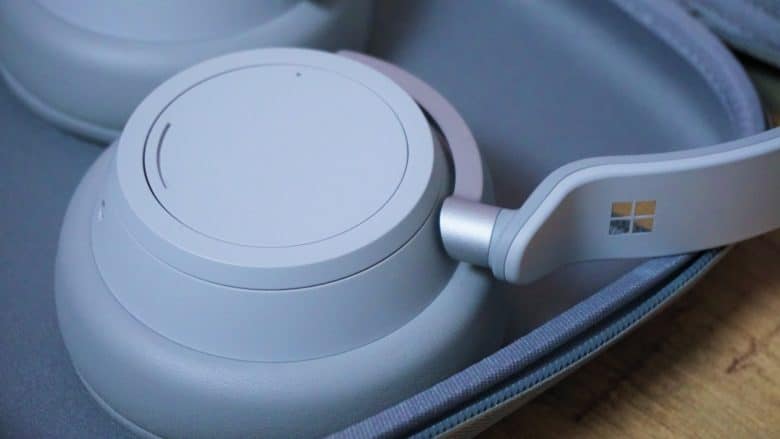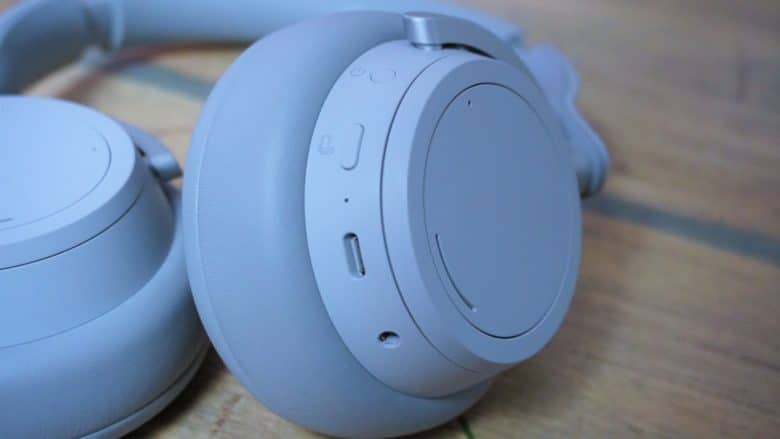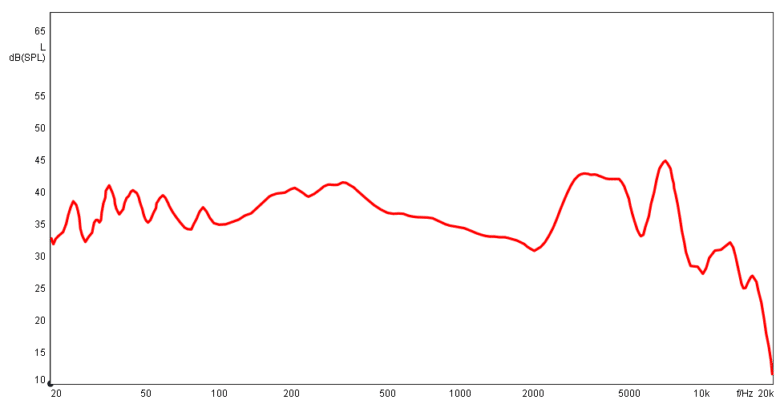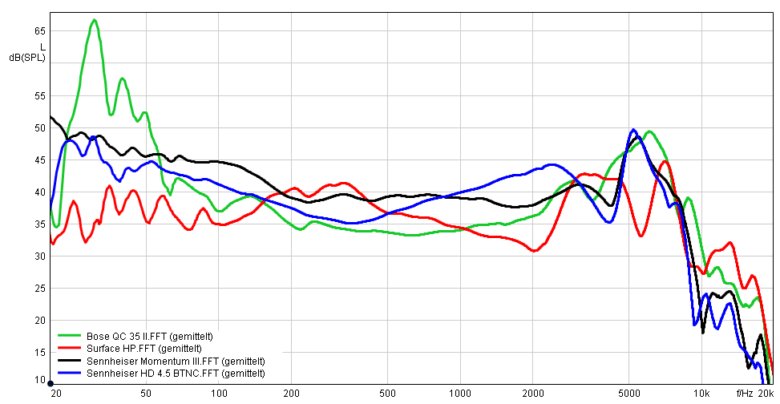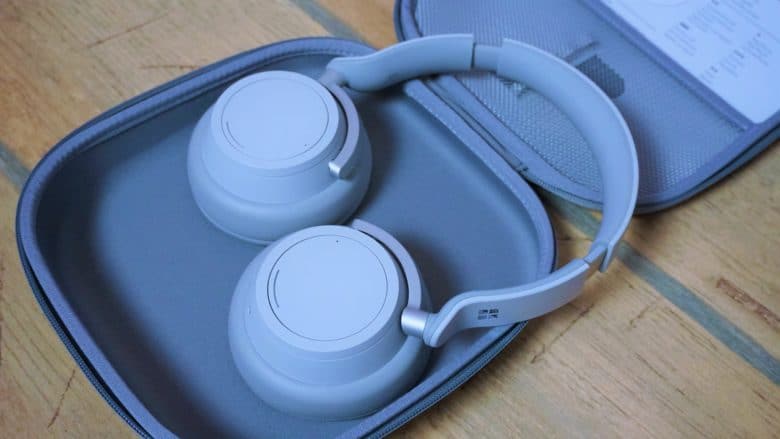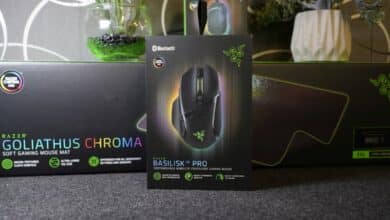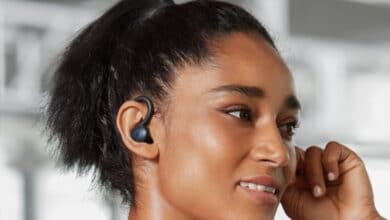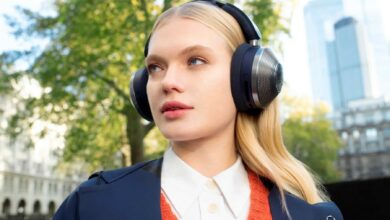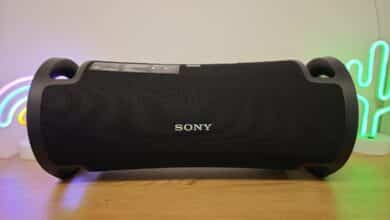
With the recent hardware event, Microsoft has officially entered the headphone market. A year ago, hardly anyone would have associated a sound device with the name Microsoft. With the Surface Headphones, the Redmond company is entering a highly competitive ANC sector that is otherwise only conquered by companies such as Sony, Bose or Sennheiser. Can Surface headphones compete with their innovative design? You’ll find out in the test report!
Innovative design meets concrete grey
There is a lot of technology behind the grey façade, but nevertheless: you have to like the grey. There isn’t much variety and so far no further colour variations have been announced. But if you pay a little attention to details, you’ll notice that the colour alone doesn’t make a statement. On the one hand, the headphones stand out from the crowd due to the bend in the temple and thus appear less ostentatious. They nestle against the head of the wearer. The temples and ear cups are nicely padded, and you can already feel the 290 gram device after wearing it for a while. I like the size adjustment of the earphones above all because of the snap-in sound – the user can always estimate exactly how big he has adjusted the earpiece. In addition, this movement is very easy. The ear cups are not only striking because of their soft padding, but also because of their innovative design.

Intuitive operation convincing
The distinctive design is underlined by the unique operation of the headphones. Each ear cup has a large touch panel, which is once again surrounded by a barely noticeable rotating wheel. The music and other functions are controlled by tip gestures. If you type once, this means play or pause. By typing twice you get to the next song and with three tippers you jump back. With very similar combinations, you make calls and activate the language assistant. The operation works wonderfully: Typing is recognized quickly in most cases. Eight out of ten times everything works reliably and as it should. Sometimes, however, the device needs a few seconds to react to the typing gestures. By the way, the touch gestures don’t work if the headphones are connected to a device via a jack cable.
The Surface headphones become even smarter with an automatic pause and playback function. This always happens when you put the headphones off or on again. Sensors are built into the ear cups and the microphone automatically mutes when the headphones are removed when you make a call. This feature also works reliably in most cases – but is nothing compared to the Sennheiser Momentum Wireless 3.
The rotating rings around the ear cups also have unique functions. The right earpiece controls the volume, while the left earpiece is for noise cancelling. This control makes the Surface Headphones what they are: Natural and innovative headphones. But Surface headphones can’t do without buttons. The on/off switch, microphone mute button, USB C and 3.5 mm jack connector are located on the right earpiece. The super fast pairing via Bluetooth is activated by pressing the power button for a longer time. By the way, two devices can be connected to the headphones at the same time.
ANC function behind Bose and Sony
Both the volume and the noise canceling can be adjusted in steps, so that the noise suppression can not only be switched on and off, but can also be adjusted in 13 steps. This works well and the difference is noticeable. Surface headphones have good but not very good noise reduction: they don’t filter out high frequencies solidly, but they can handle wind noise well. For me personally, the function made a clean impression, but headphones from Bose or Sony are ahead of Surface headphones.
Warm sound, but not aptX
The sound quality of the Surface headphones was surprisingly good, even without advanced Bluetooth audio codecs. Because you have to know that: The Surface headphones don’t have aptX or AAC and they support Bluetooth 4.2 instead of the latest five. This surprised me a lot and is an absolute minus point if you want to bring high-quality headphones to the market. For the test, the Surface headphones were measured in the sound lab. As you can see on the curves of the measurements, a nice frequency curve looks different. The bass is measured in the front part, followed by the mid-range and finally the treble. Compared to other headphones, the low tones are less powerful and powerful. The upper middle notes sound a bit dull. Some peaks are visible in the treble, which can lead to a rather sharp perception of certain tones. Subjectively, the sound is warm and rounded and sounds very spatial. The Surface Headphones are especially suitable for bass-heavy songs and not for songs with a lot of vocals.
Cortana or Google?
Although Surface Headphones have been on the market for a while, you won’t find a Cortana app on the Google Play Store yet. Since the earliest version, however, a lot has happened with the English APK, which you inevitably have to download if you prefer to use Cortan. Once the application is installed, you can activate the language assistant with the “Hey Cortana” command. For people who work with Microsoft’s calendar, Outlook and other services, the Cortana support makes sense. Meanwhile, it can process commands well and its announcements no longer sound quite as robotic.
But there is another way, because if you tap on a touch panel for a long time, the standard assistant of the mobile phone is activated. That’s the Google Assistant for me and everything works the way it’s supposed to: I can check my appointments, set alarm clocks and find out about the weather. To make sure that both voice assistants and callers in general understand me well, Microsoft has installed a total of eight microphones in the Surface Headphones. My conversation partners have always understood me wonderfully, both in the quiet apartment and on a noisy street. Only at train stations do the headphones not cope well with the high frequencies of squeaking trains.
Battery life, oh dear…
The Surface Headphones are specified by the manufacturer with a 15 hour battery life, but they can hardly keep their promise. They usually only last 13 to 14 hours and that’s damn little compared to Bose or Sony. However, they recharge pretty quickly with the included USB C cable. Fun fact on the side: Although the app is not yet available in German, Cortana speaks to you in German every time you turn on the headphones. Then it lists the different connected devices and how much battery charge is still available. Unfortunately, this often interrupts the flow of music or podcasts, because if you lose the connection to a device, such as a laptop, it promptly informs you. Unfortunately, the medium does not pause, as so often happens with other headphones. That means you miss about 5 seconds, because Cortana just talks about it. To be honest, that bothers me a lot!
And now?
The Surface Headphones are good, but not great. If you’re looking for the big package that’s right for you, you won’t be happy with Microsoft’s headphones. For the same money you can also buy the Bose QC35 II or the Sony MX1000M3 – they put a scoop on top. The low battery life and the missing codecs are absolute minus points. Also the noise suppression is better with the competition. However, if you attach great importance to design, you could take a closer look at the Surface Headphones. Their appearance is so far unique. They can also be operated with a rotary wheel, which is a real power feature. They’re also very comfortable, well crafted, have a USB-C port and solid connectivity. All in all, it can be said that Microsoft fans are definitely worth a look, while everyone else prefers to wait for the second version.
Surface Headphones
Workmanship
Comfort
Sound Quality
Recording Quality
Features
Value for Money
Great workmanship and a unique service. Minus points are awarded for minor details, which Microsoft will certainly be able to improve in the next version.


